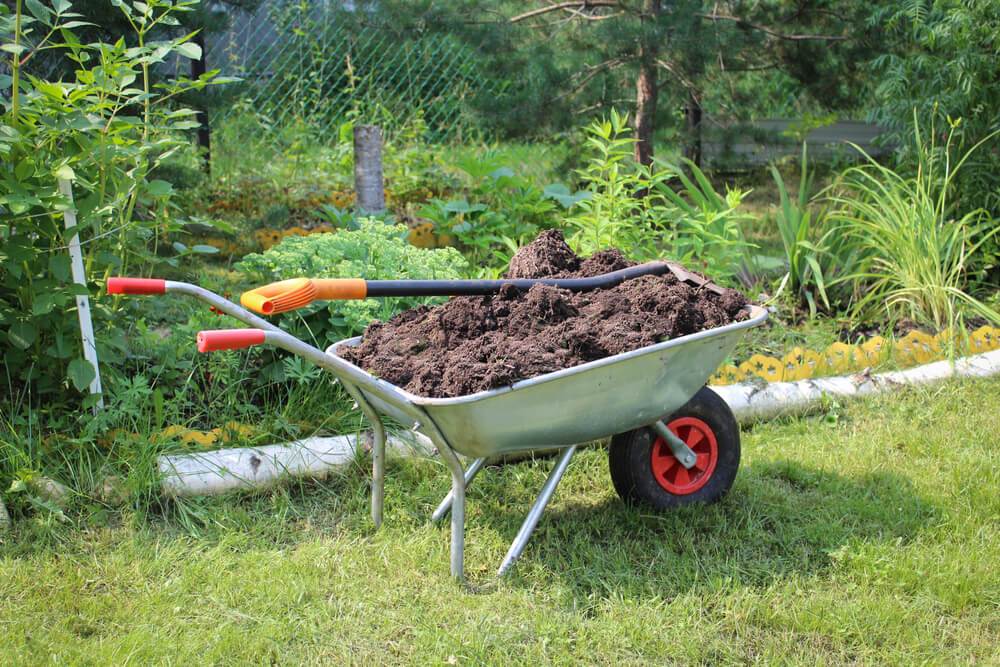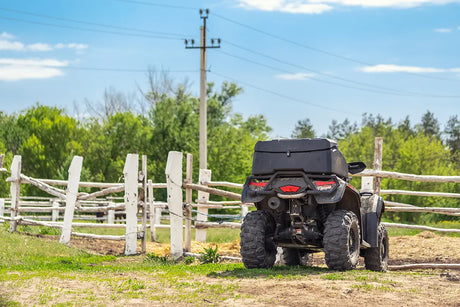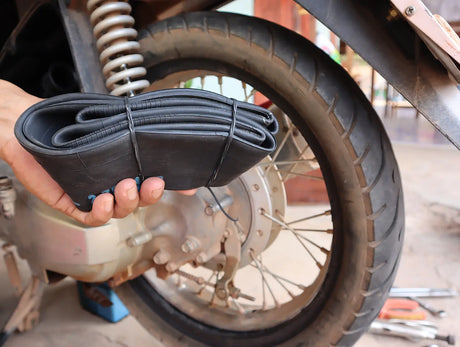Picture this, it’s a beautiful sunny Sunday afternoon and you have decided to get the wheelbarrow out to do some of those garden chores, only to find the wheelbarrow tyre is buggered.
As frustrating as this is, don’t go rushing down to the store to buy a whole new wheelbarrow when all can be restored simply by replacing the wheelbarrow tyre and tube.
Upon checking the sidewall of the wheelbarrow tyre, you see a bunch of numbers and cannot make any sense of the all the numbers and details stamped on the side. How are you meant to replace a wheelbarrow tyre when you have no idea what to order?
Stress not! Finding out what size you need is easy once you know what to look for and how to understand it.
There are four things to take note of when looking to replace your wheelbarrow tyre.
- The tyre size,
- If the tyre is tubeless or has a tube in it,
- The ply rating or load carrying capacity
- The type of tread pattern
Knowing these four things can help in making sure the tyre you decide to purchase is going to be the right tyre for your wheelbarrow.
Tyre Size
Lets first look at the tyre size. You may think that all wheelbarrows have the same size but that is not always the case.
To find the size, we need to check to see what is stamped on the side of the tyre. It will most likely look something like this,

The most common tyre size stamped on the side of a wheelbarrow tyre is something like 4.80/4.00-8. This is a multi-fit size, not three separate measurements.
In this case:
- 4.80/4.00 indicates that the tyre can fit both 4.80 and 4.00 width rims. It's a versatile size designed to suit a range of wheelbarrow rims.
- The 8 at the end refers to the rim diameter, in inches. So this tyre is designed to fit an 8-inch rim.
When it comes to overall tyre height, a 4.80/4.00-8 will generally measure around 15 to 16 inches in diameter once it's inflated and fitted. However, this can vary slightly depending on the tread pattern and manufacturer.
These kinds of tyres are commonly used on wheelbarrows, hand trolleys, and other light-duty equipment. They're handy because the multi-fit size means they'll suit a wider range of rims without needing an exact match.
An inexpensive wheelbarrow tyre option in this size is the Bushmate P301, which are available on GEO Tyres.
You may be looking at your current wheelbarrow tyre and only seeing 2 numbers such as 4.00-8. Is this the same size as a 4.80/4.00-8?
In most cases, a 4.80/4.00-8 and a 4.00-8 will both have an approximate height of 16 inches.
If you have a more heavy-duty wheelbarrow or carry more weight than your standard garden clippings, then you may have a larger and wider than standard wheelbarrow tyre. This will most likely be a 16x6.50-8, which is the most common for these larger wheelbarrows. The same format applies to the 16x6.50-8 as it does for the 4.80/4.00-8 – 16 equals the height, 6.50 equals the width and 8 equalling the rim height.
An inexpensive wheelbarrow tyre option in this size is the Kenda K358, which are available on GEO Tyres.
Tube or no tube?
When replacing your wheelbarrow tyre, you need to also take note if a tube is currently fitted inside the tyre. Most of the time, this will be the case unless you have a flat free tyre, which is another thing we need to be mindful of too.
To verify if a tube is fitted, there are a couple of ways we can find this out. The first being to check the sidewall of your current wheelbarrow tyre. All tyres will have this information stamped on the sidewall where it will say either Tubeless or Tube Type. Do take note, however, that if you have Tubeless stamped on the side of the tyre, it doesn’t necessarily mean that there isn’t any tube fitted. Often people will use a tubeless tyre on a tube type rim – meaning the rim is either a two-piece rim that bolts together or the rim is not designed to hold air without a tube.
The other option is to check the valve itself. The easiest option here is to deflate the tyre completely and check what the valve does. If it stays in the valve hole location, you have a tubeless setup but if the valve falls inside the hole into the tyre, then you have a tube fitted. Alternatively, if you can push the bead of the wheelbarrow tyre out of the way, you may be able to check inside the tyre to see if there is a tube inside it.
Tube Type
Tubeless
Whilst your current wheelbarrow tyre may not have a tube installed, you may be suffering from constant air loss. If this isn’t due to punctures, it may well be that the current rim isn’t in very good shape and the air is leaking out from either cracks or improper sealing.
This can be caused by the age of the rim where small hairline cracks have started to form or possible build-up of rust or corrosion around the bead area of steel rims. If you have a build-up of rust on the rim, it is worthwhile to use a steel brush to remove this before replacing any tyres or tubes, as it will only lead to punctures happening to the tubes from the sharp fragments of the rust.
Tread Pattern
Most wheelbarrows will have either a rib or a block tyre tread pattern.
A rib tread pattern has circumferential grooves that run parallel with the tyre whereas the block pattern can have
Quite often those wheelbarrows that have a rib tyre fitted can be converted to a block pattern to provide extra traction when compared to the rib pattern.
Ply Rating / Load Rating
Our final step in choosing a wheelbarrow tyre is selecting the right tyre that is capable in supporting the weight you plan to carry in the wheelbarrow. Most of the time, the higher the ply rating, the more weight the tyre can carry. Another thing to note when it comes to ply ratings is that generally the higher the ply, the more puncture resistance the tyre has. This can be very beneficial if you find yourself repairing wheelbarrow tyres and tubes due to regular punctures, as the higher ply rating has usually has a reinforced sidewall and tread area. However, a higher ply rating can also translate to a stiffer tyre, meaning there will be less give in a 6 ply tyre vs a 2 ply tyre.
Choosing a wheelbarrow tyre doesn't have to be difficult. Get in touch with us today if you need more help in choosing a wheelbarrow tyre that will best suit your needs.
View our full range of Wheelbarrow Tyres and Tubes at GEO Tyres.




